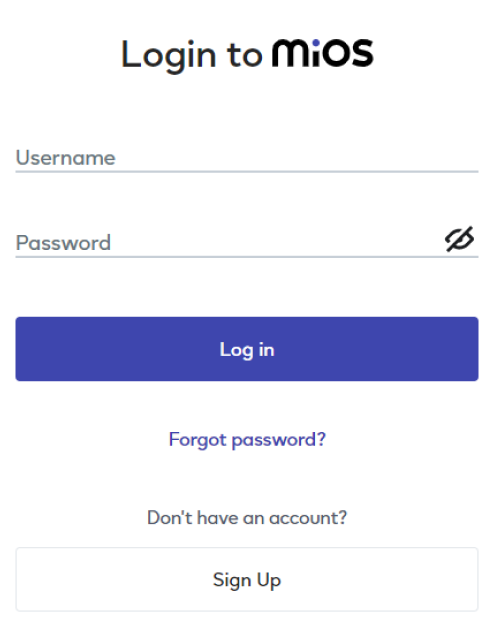
Smart security with EzloPi!
Automatic illumination using portable lamp
The EzloPi smart devices provide automation through simple, customizable use with our open-source EzloPi platform, making daily life easier and improving human-machine interactions.
Before moving into this example, it is very important to know about the device registration, provisioning and converting the ESP32 device into an EzloPi device along with knowledge of Web Flasher, MiOS Mobile Application for Android/iOS and the MiOS Web Application.
1. About this example
This project utilizes a mini portable lamp/booklight, controlled by the EzloPi device and output of the luminous intensity sensor. This setup enables automatic illumination in low-light conditions. The LTR303ALS sensor continuously measures ambient light levels, allowing the EzloPi device to detect when the surrounding area becomes dim. When the light intensity falls below a set threshold, the EzloPi device activates the LED lamp, providing instant brightness. This project is ideal for creating energy-efficient, hands-free lighting solutions for dim environments or nighttime visibility.
3. Circuit Diagram & Interface
The following components are required for interfacing with the EzloPi device:
- ESP32 as an EzloPi smart device.
- Mini portable booklight (24 LED).
- LTR303 ALS Luminous Intensity Sensor.
The wiring diagram of ESP32 30 pin is represented as follows:
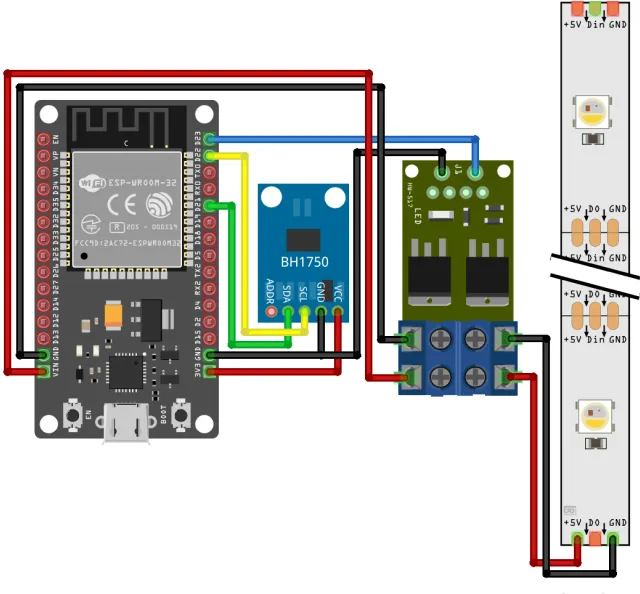

The following connections are made in order to complete the circuit setup.
From ESP32 to the LTR303ALS:
| ESP32 | LTR303ALS |
| 3V3 | VIN |
| GND | GND |
| D21 | SDA |
| D22 | SCL |
From ESP32 to the MOSFET driver module:
| ESP32 | MOSFET driver |
| D23 | Trig |
| VIN | VIN+ |
| GND | GND, VIN- |
From MOSFET driver module to LED Strip:
| MOSFET Driver | 24 LEDs Strip |
| OUT+ | 5V |
| OUT- | GND |
4. Interfacing the Luminous Intensity Sensor with Book light with the EzloPi Web Flasher:
1. Set up your device/hardware by visiting config.ezlopi.com

- Log in using the credentials which you just set earlier while signing up.
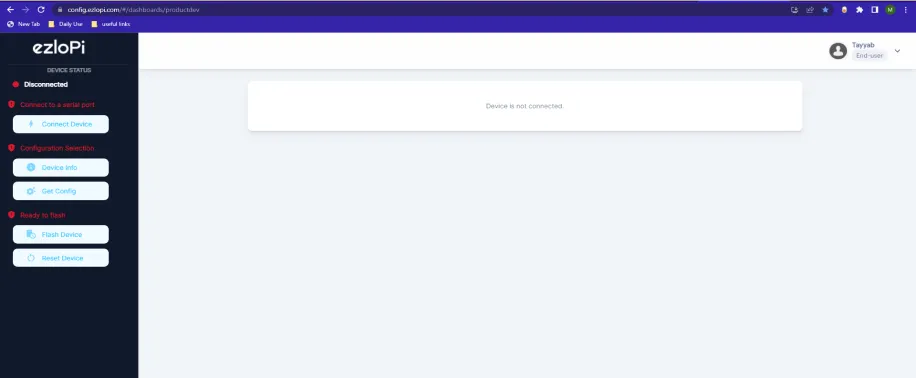
- Now, click on the Connect Device button and a pop-up window will appear.
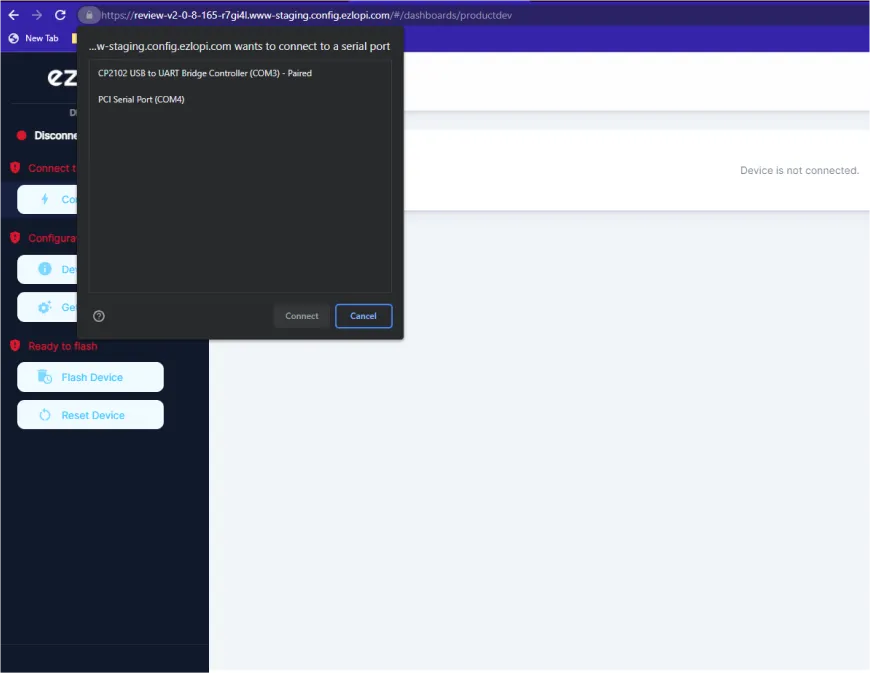
- Now, select COM Port to which your ESP32 device is connected. In our case, the COM3 port is used.
Click Connect
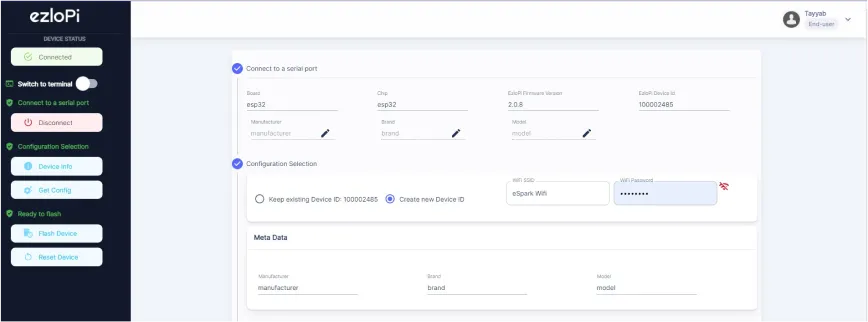
- If you are new to this and it's your first time configuring, select Create new Device ID. Enter Wifi SSID and Wifi Password.
- In the Device Configuration, tab click on I2C.
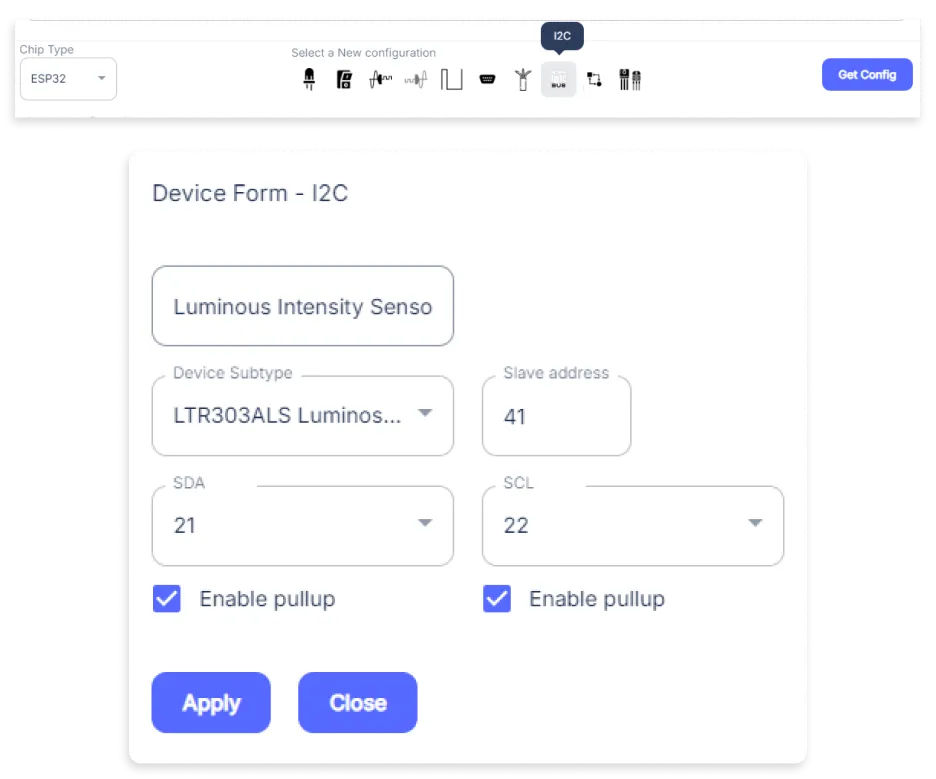
- I2C Input window will open for inputting the following parameters:
- Set a Device name of your choosing. In our case, we set it to Luminous Intensity Sensor.
- Set Device Subtype to LTR303ALS Luminosity Sensor.
- Set the Slave Address to 41.
- Set the SDA pin to 21.
- Set the SCL pin to 22.
- Tick mark both the boxes of Enable pullup.
- Then Click Apply Button.
- In the Device Configuration, tab click on Digital Output.
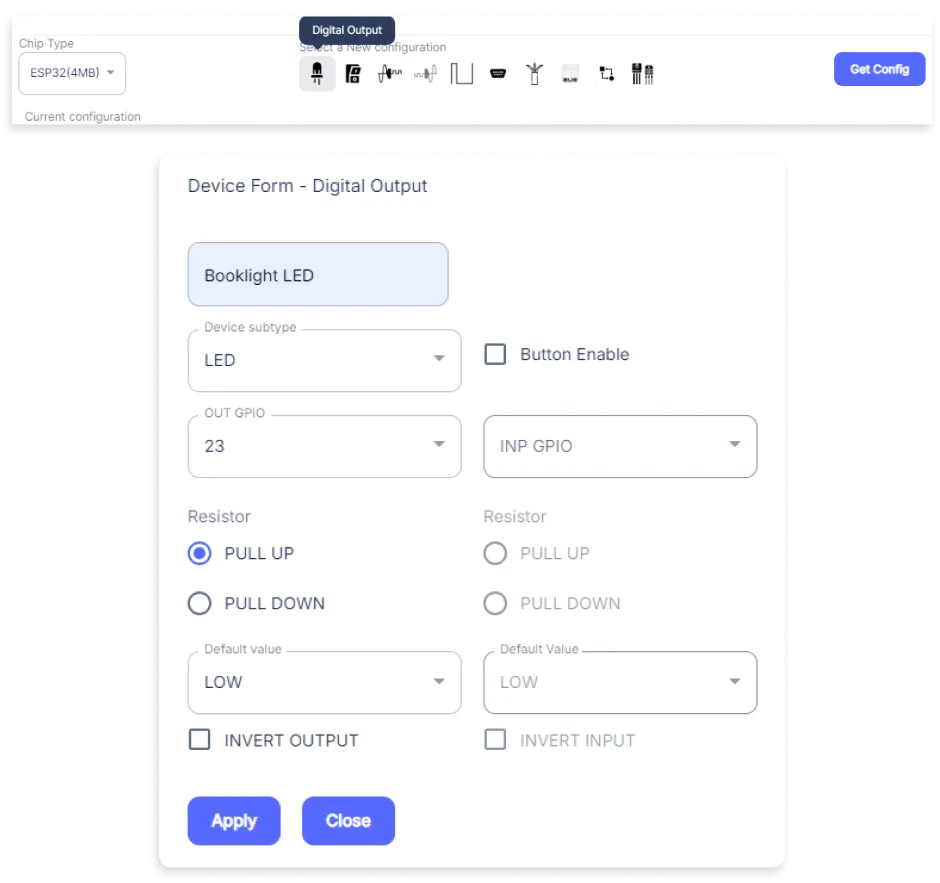
- A Digital Output window will open for inputting the following parameters:
- Set a Device name of your choosing. In our case, we set it to the Booklight LED.
- Set Device Subtype to LED.
- Set the OUT GPIO to 23.
- Set the Resistor to PULL UP.
- Then Click Apply Button.
- After clicking the apply button you can see a table of your setting in the device configuration tab.
- Press the Flash Device button.
- A window will appear on the bottom right side of the screen displaying “Please press BOOT button while flashing begins.”
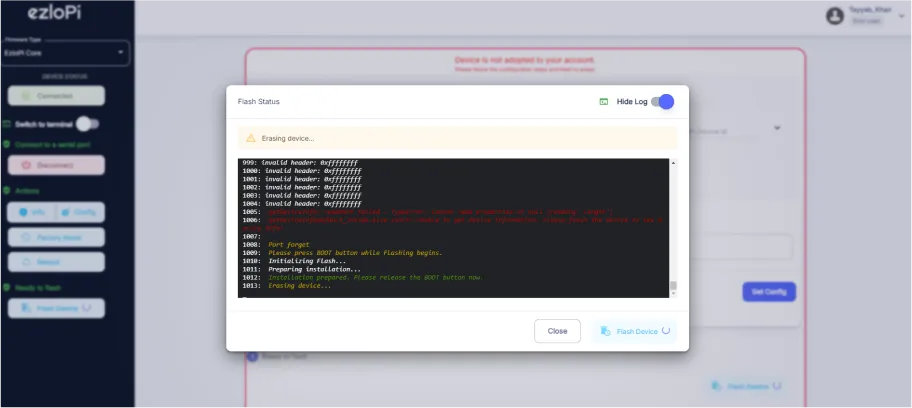
- Hold the BOOT button down until the next window appears on the bottom right side of the screen which says “Installation prepared. Please release the boot button now.”

- Release the BOOT button from your ESP32 when this pop-up on the bottom right window appears.
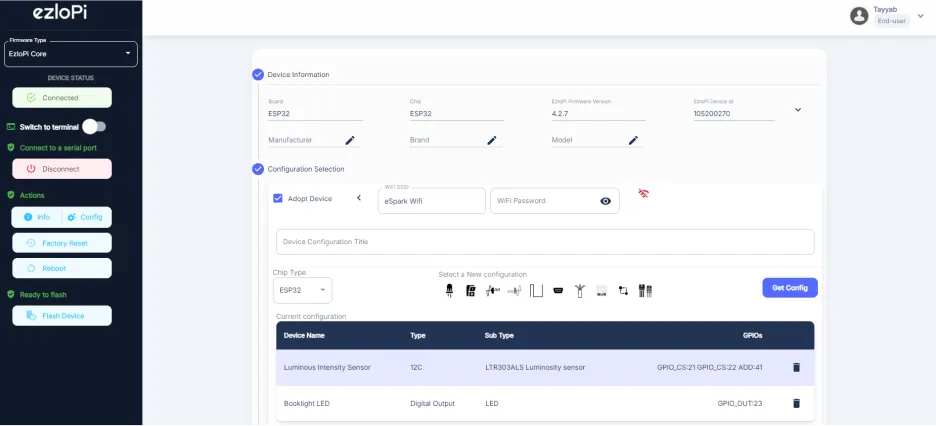
- After some time, a popup will appear saying Device Flashed Successfully! This means that your device has been set up successfully.
5. MiOS Web Dashboard
- After configuring the controller with the EzloPi web flasher, head to ezlogic.mios.com

- Use the same credential to log in that you used for configuring the controller with the web flasher.
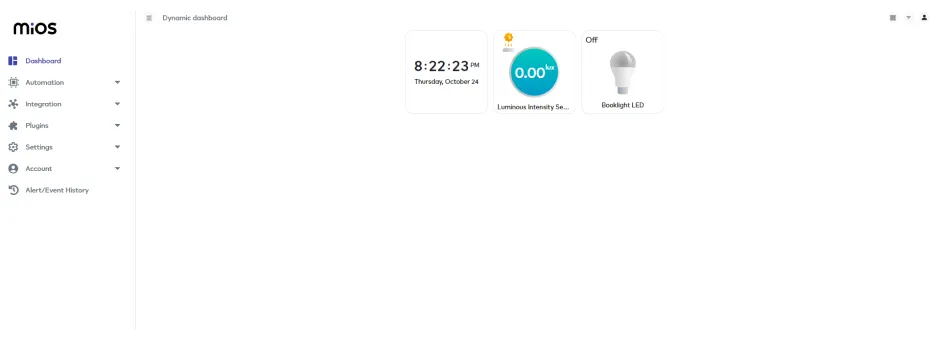
- Here, on the MiOS web dashboard, you will be able to see the tiles of connected devices. In our case we have a light intensity sensor and a booklight LED tiles. The booklight LED tile will indicate the status of the luminous intensity sensor depending on the light being detected by the sensor.
MeshBots:
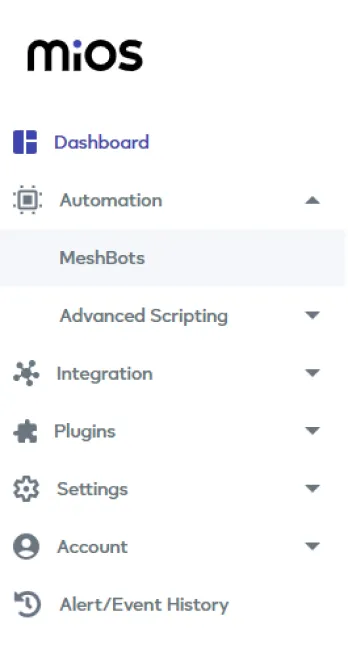
- On the left side of the screen under Automation, click on MeshBots.
- On meshbot screen, click on Create new MeshBot button present on the top right corner of the screen.
- After clicking on Create new MeshBot, you will see this now under Automation MeshBot click on Cloud.
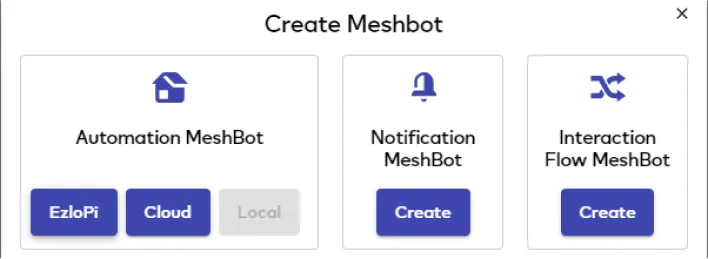
- On the next screen you will see that we can create a name of our choosing, in this case we write it as Test001.
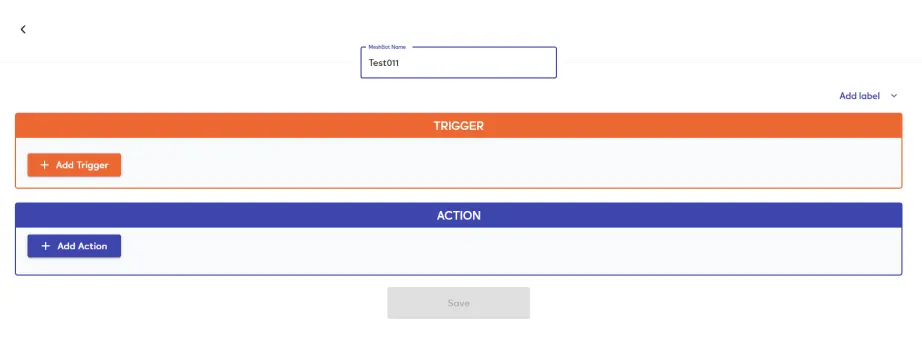
- In the trigger tab you can set the TRIGGER for your device and in the ACTION tab you can set the action to be performed based on the trigger which you have created.

- Set these things in TRIGGER section:
- Set Node Type to Device.
- Set the Node to Luminous Intensity Sensor.
- Set the Category to power_abstract.
- Set the variables to uuid.
- Set the Comparator to Less (<).
- Set the Value Type to value.
- Set the value to 10.

- Set these values in the TRUE part of the ACTION section.
- Set Controllable Type to Device.
- Set the Controllable to Booklight LED.
- Set the Capability to power_command.
- Set the Value Type to set.
- Set the Value to true.
- Now Click the Save button.

- After clicking the save button you can see this screen on the top right corner of the screen.

- Here you can see your saved MeshBot. Now click on Dashboard.

- Now in the MiOS web dashboard, we can see that when the light intensity detected by the intensity high then the booklight LED remains OFF because of the rules we have set in meshbot.

- Here, in the above figure, we can see that when the light intensity detected by the intensity sensor is very low then the booklight LED turns ON because of our meshbot settings.
6. MiOS App
You can download the MIOS Android app from the Google Play Store and Apple App Store.
- After downloading the app, proceed to install the application and open it.

- Using the MIOS mobile application, create a new Ezlo Cloud account using the sign-up option. If you already have an account, you may proceed to log in.

- After successfully logging in, you will be able to see the number of controllers connected such as a lamp, fan, or any other device in the MiOS app. Tap on any controller of your desired ID:
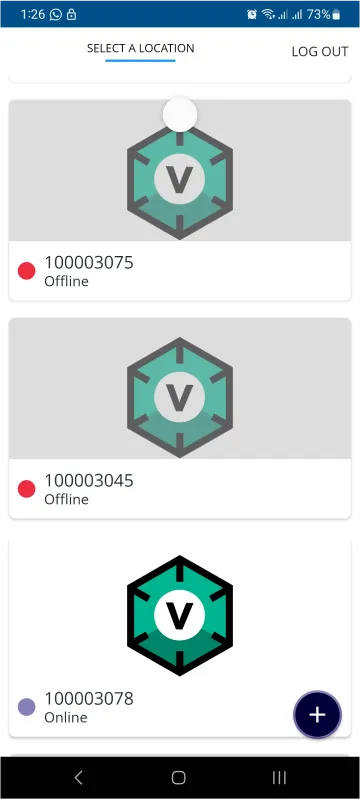
- You will be able to see the status of your controller whether it is online or offline. Access the device dashboard, and tap the device. The following view of the dashboard will appear:
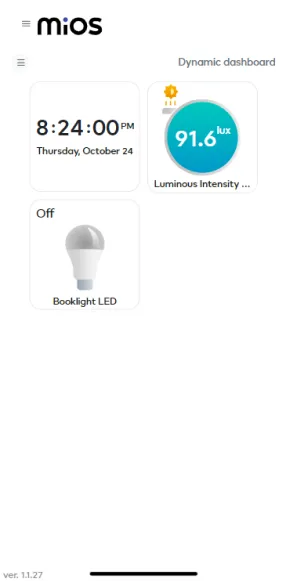
- Now in the MiOS mobile dashboard, we can see that when the light intensity detected by the intensity high, the booklight LED remains OFF because of the rules we have set in meshbot.
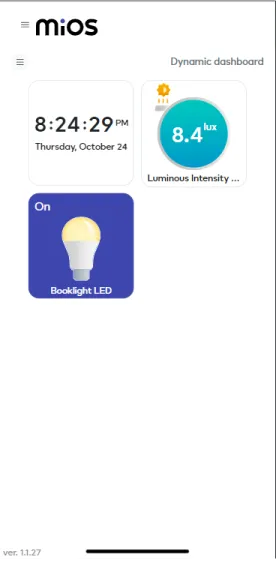
- Here, in the above figure, we can see that when the light intensity detected by the intensity sensor is very low then the booklight LED turns ON because of our meshbot settings.

eZlopie Products A single-channel 5V relay module $00.00

eZlopie Products Momentary switch $00.00

eZlopie Products Level Shifter Module (BSS138) $00.00

eZlopie Products ESP32
$00.00

eZlopie Products AC Lamp and Holder
$00.00











